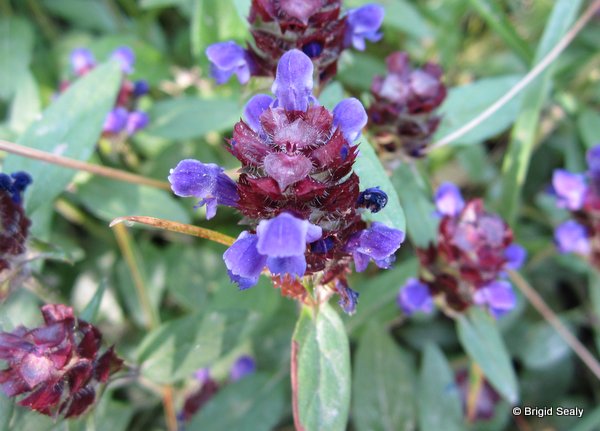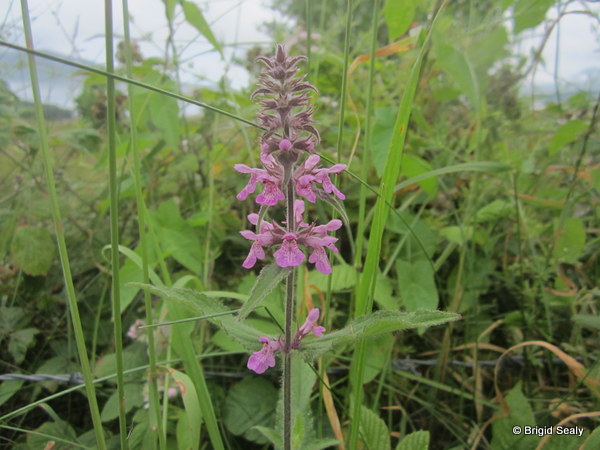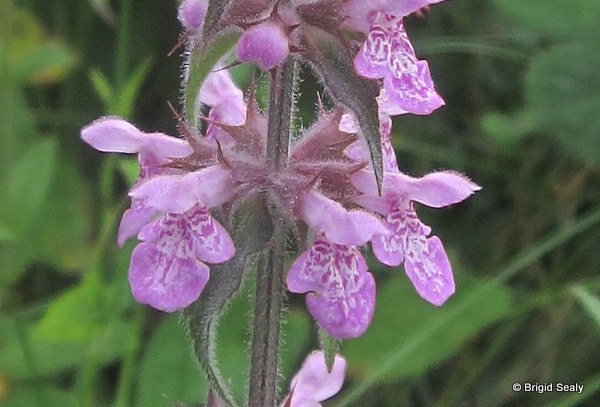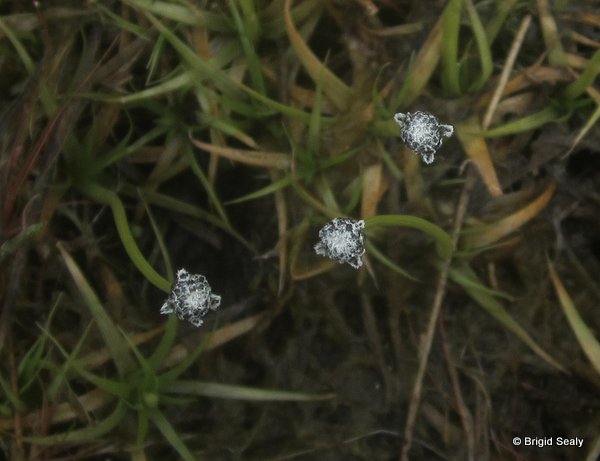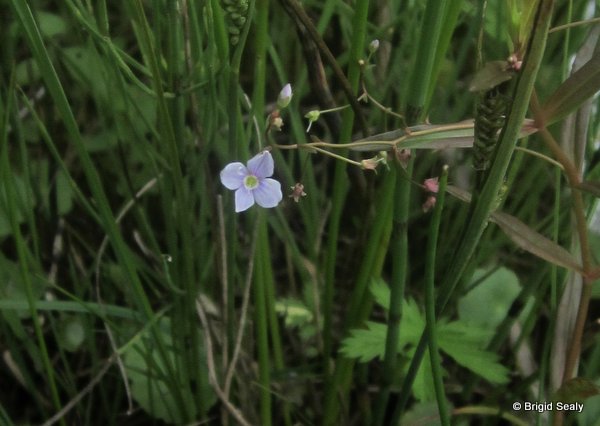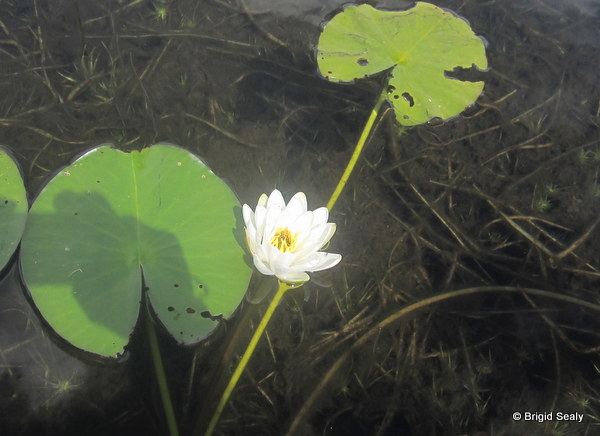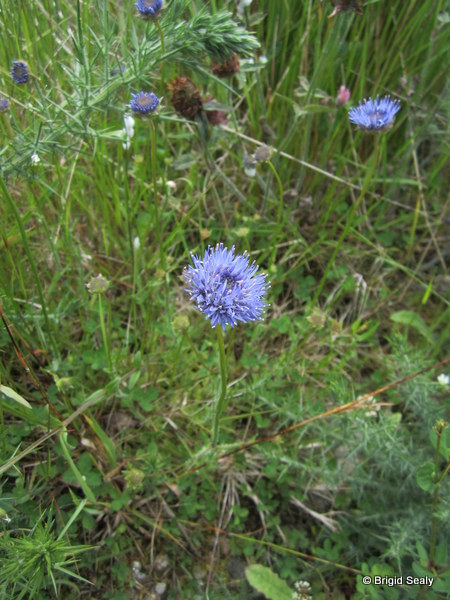Selfheal is a very common flower throughout Ireland. As its name suggests, it has medicinal properties, and was used in a poultice to heal wounds, and to produce a liquid gargle for sore throats.
 There are not many flowers that will bloom in complete shade; most woodland flowers bloom before the trees com into leaf. One exception is this delicate white flower, Enchanter’s Nightshade. According to Greek legend, the enchantress Circe used a potion containing this plant to turn Odysseus’ men into pigs. Ironically, this plant doesn’t even belong to the Nightshade family, but it’s a good story and gives this flower a certain mystique.
There are not many flowers that will bloom in complete shade; most woodland flowers bloom before the trees com into leaf. One exception is this delicate white flower, Enchanter’s Nightshade. According to Greek legend, the enchantress Circe used a potion containing this plant to turn Odysseus’ men into pigs. Ironically, this plant doesn’t even belong to the Nightshade family, but it’s a good story and gives this flower a certain mystique.
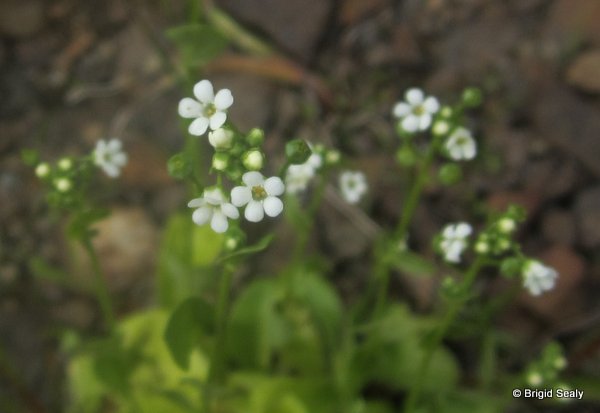 This lakeside plant has clumps of little white flowers, which grow on long stalks from a base of yellowish-green, succulent leaves. I have come across claims that the leaves are edible, but I have never met anybody who says that they have tried them! I have come across brookweed growing on the Connemara seashore as well as lakeshores.
This lakeside plant has clumps of little white flowers, which grow on long stalks from a base of yellowish-green, succulent leaves. I have come across claims that the leaves are edible, but I have never met anybody who says that they have tried them! I have come across brookweed growing on the Connemara seashore as well as lakeshores. 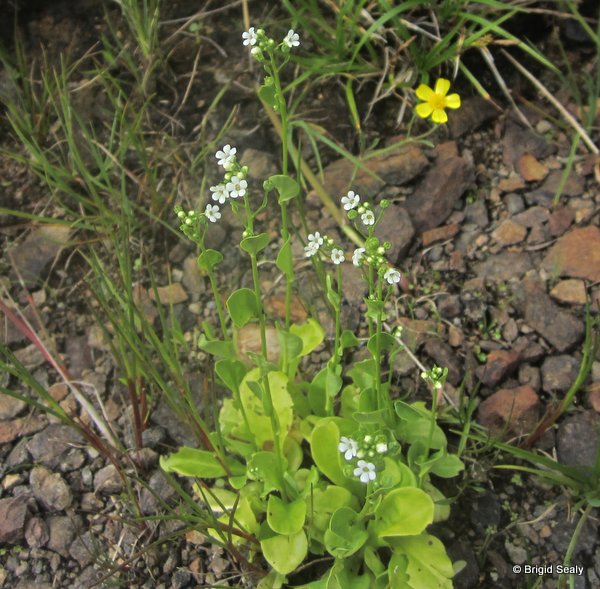
I walked past this tall purplish-pink flower several times without looking at it closely, thinking it was more Purple Loosetrife. On closer inspection I saw that the flowers are quite different, with a pronounced lip almost like an orchid. This woundwort grows in one spot on our lane, and I have also seen it on one of the nearby offshore islands. Woundworts get their name from the fact that they were once used as a herbal remedy to help heal wounds. They do indeed have antiseptic properties, although they have a rather unpleasant smell, more pronounced in the case of Hedge Woundwort.
This tiny flower grows up through the long grass that is threatening to engulf our neglected garden. It is similar to the related stitchworts and chickweeds, but is easily distinguished by its hairy stems and leaves (which resemble mouse ears, which may be where the name comes from). The petals are deeply notched, giving the impression that there are more than 5.
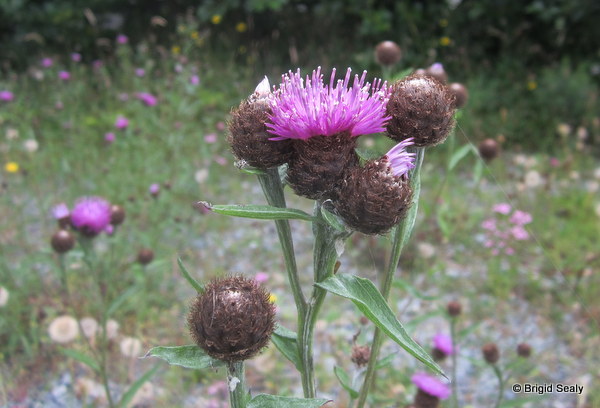 This must be one of Ireland’s most prolific wild flowers. It has completely colonised the gravel driveway of our house, where is produces a lovely splash of colour, and keeps the insects happy. Knapweed is easily recognisable, with its pinkish-purple flowers that resemble those of a thistle, but without the prickles, luckily.
This must be one of Ireland’s most prolific wild flowers. It has completely colonised the gravel driveway of our house, where is produces a lovely splash of colour, and keeps the insects happy. Knapweed is easily recognisable, with its pinkish-purple flowers that resemble those of a thistle, but without the prickles, luckily.
The White Water-lily, ( Nymphaea alba) is one of the most impressive wild flowers in Connemara, looking like a lotus flower floating on the water of our unpolluted lakes. I photographed this flower in a lake called Lough na bhFaioleann (Lake of the Seagulls) in the spectacular wild surroundings of Roundstone Bog.
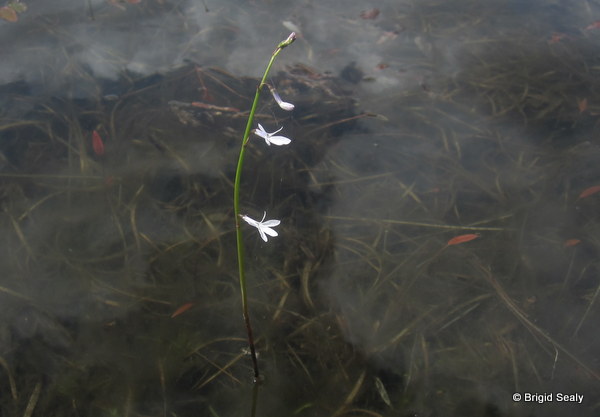 I came across this pretty little water flower growing in a lake in Roundstone Bog, one of Connemara’s wildest and most unspoiled habitats, with its network of rivers and lakes. I subsequently found it growing practically on my own doorstep, in Garraunbaun Lake in Moyard. The white flowers grow above the water on long stalks, while the leaves are under water.
I came across this pretty little water flower growing in a lake in Roundstone Bog, one of Connemara’s wildest and most unspoiled habitats, with its network of rivers and lakes. I subsequently found it growing practically on my own doorstep, in Garraunbaun Lake in Moyard. The white flowers grow above the water on long stalks, while the leaves are under water.

